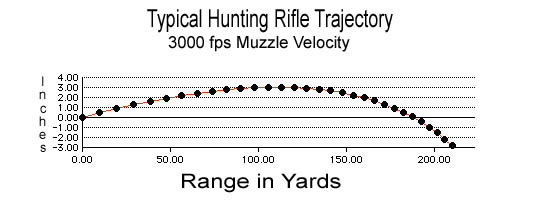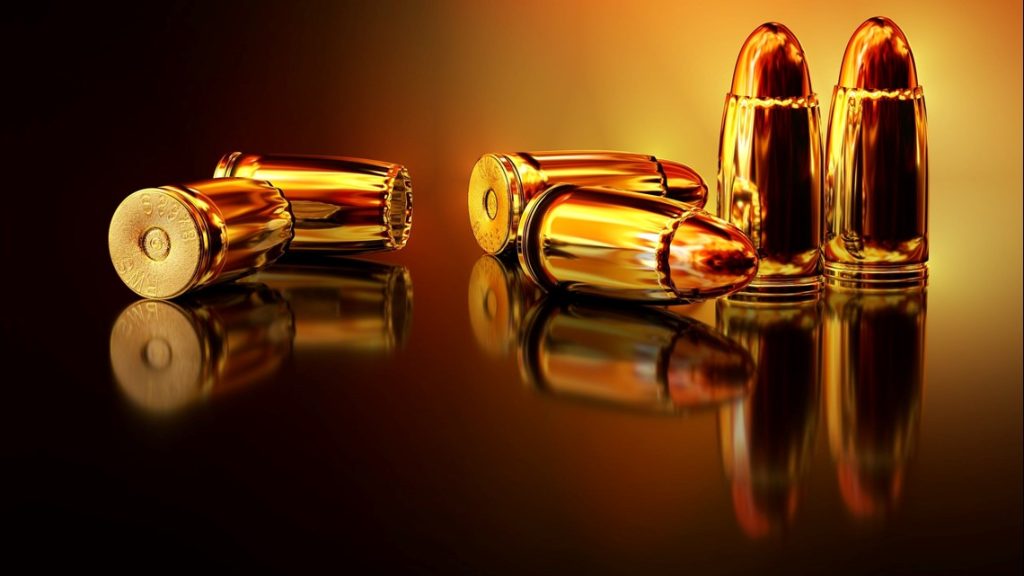How far would a bullet travel? The answer depends on several factors, including the type of bullet, the firearm used, the angle of the shot, and environmental conditions. Generally, bullets from handguns travel shorter distances than those fired from rifles.
For example, a 9mm bullet fired from a standard handgun can travel up to 1 to 2 miles (1.6 to 3.2 kilometers) under ideal conditions, though it becomes ineffective and unstable long before reaching that distance.
In contrast, high-powered rifle bullets like the .308 Winchester or .30-06 Springfield can travel up to 3 to 5 miles (4.8 to 8 kilometers), especially when fired at a steep angle into the air.
However, these are theoretical maximum distances. In real-world scenarios, bullets are affected by gravity, air resistance, wind, and terrain. Most bullets follow a curved path, called a ballistic trajectory, which means they will drop quickly after traveling a certain distance.
For example, in target shooting or hunting, the effective range—where the bullet remains accurate and lethal—is typically much shorter than its maximum possible range. A .22 LR, for instance, may travel a mile or more, but its effective range is closer to 150 yards.
Another critical point is safety. Even after a bullet loses its lethal accuracy, it can still cause serious injury or damage at long distances. That’s why understanding bullet travel is essential for shooters, hunters, and anyone near firing ranges.
In summary, a bullet can travel anywhere from 1 to 5 miles, depending on the firearm and bullet type. But the real-world effective range is usually much shorter. Always follow proper safety guidelines and be aware of your surroundings when handling firearms.
What Determines How Far a Bullet Can Travel?
Several key factors determine how far a bullet can travel once it leaves the barrel of a firearm. The most important factor is bullet caliber and weight. Larger, heavier bullets often carry more momentum and can travel longer distances, but they may also slow down more quickly due to air resistance.
Bullet shape also plays a critical role—streamlined bullets with pointed tips (like those used in rifles) are more aerodynamic and maintain speed over greater distances compared to flat-nosed or round bullets typically used in handguns.
The type of firearm also influences bullet range. Rifles, which have longer barrels, generally produce higher muzzle velocities than handguns.
A bullet fired from a high-powered rifle can travel several miles under ideal conditions, while one fired from a handgun might only travel a mile or less. Muzzle velocity, or the speed at which a bullet exits the barrel, is another crucial factor—faster bullets travel farther before gravity and air resistance bring them down.
Firing angle significantly impacts distance as well. A bullet fired straight up can reach extreme altitudes but will fall unpredictably. A bullet fired at a 30 to 45-degree angle will usually achieve the greatest horizontal distance. However, real-world shooting conditions rarely mimic these ideal angles.
Environmental conditions, such as wind, air density, humidity, and elevation, also influence how far a bullet can travel. For example, bullets generally travel farther in thinner, high-altitude air because there’s less resistance.
In short, bullet travel distance is not fixed—it’s the result of a combination of physics, firearm design, and environmental conditions. Knowing these factors is essential for both safety and accuracy when handling firearms.
Bullet Speed vs. Travel Distance

Bullet speed, also known as muzzle velocity, plays a major role in determining how far a bullet can travel—but it’s not the only factor. Generally, the faster a bullet travels, the farther it will go before losing energy and dropping to the ground.
High-speed bullets can overcome air resistance for a longer period, maintaining a flatter trajectory and greater momentum. For example, a typical 9mm handgun bullet leaves the barrel at around 1,200 feet per second (fps) and may travel up to 1–2 miles under ideal conditions.
In contrast, a high-powered rifle bullet like the .223 or .308 can exit the barrel at over 2,700 fps, allowing it to potentially travel 3–5 miles or more.
However, speed isn’t everything. A fast bullet can still be affected by gravity, air resistance, and wind. The shape and weight of the bullet determine how well it maintains velocity in flight.
Sleek, pointed rifle bullets retain speed much better than round-nosed handgun bullets. Additionally, once a bullet begins to slow down—usually within seconds of being fired—its range begins to decrease rapidly.
There’s also a tradeoff between speed and accuracy. Some extremely fast bullets can become unstable over long distances, especially if they aren’t matched properly to the firearm’s barrel twist rate or are affected by crosswinds.
That’s why effective range (the distance where the bullet remains accurate and lethal) is often much shorter than maximum range (the distance it could theoretically travel).
In summary, higher bullet speed usually results in greater travel distance, but only when paired with proper design, environmental conditions, and firing angle. Understanding the relationship between speed and distance is crucial for both marksmanship and safety.
Average Ranges by Bullet Type and Caliber
The average distance a bullet can travel varies widely based on its type and caliber. Handgun bullets generally travel shorter distances than rifle bullets due to lower velocity and less aerodynamic design.
For example, a .22 LR (Long Rifle) bullet—commonly used in small-caliber rifles and pistols—can travel up to 1.5 miles (about 2.4 km) under ideal conditions, but its effective range is closer to 150 yards for accuracy and stopping power.
A 9mm handgun bullet, often used in law enforcement and self-defense, has a maximum range of 1 to 2 miles (1.6 to 3.2 km), though its effective range is typically 50–100 yards. Moving up in power, a .45 ACP round has a shorter maximum range—around 1 mile—but delivers more impact at closer ranges.
Rifles offer much longer ranges. A .223 Remington (commonly used in AR-15s) can travel up to 2–3 miles with an effective range of 300–500 yards.
A .308 Winchester, a popular hunting and sniper round, can reach nearly 4 to 5 miles, with an effective range of 800–1,000 yards. High-powered rounds like the .50 BMG (used in military-grade rifles) can exceed 7 miles in maximum range, though the effective range for accurate shooting is usually capped at 1.5 to 2 miles.
Shotguns, on the other hand, have much shorter ranges due to pellet spread and lower velocity. A 12-gauge slug might travel up to 400–500 yards, but its effective range is often just 75–100 yards.
In conclusion, bullet range depends on caliber, bullet type, and firearm. While many bullets can travel miles, they are only effective and accurate within a much shorter range—something every shooter should understand for both performance and safety.
Theoretical Max Distance vs. Real-World Range
When it comes to how far a bullet can travel, there’s a big difference between theoretical maximum distance and real-world effective range.
The theoretical max distance refers to how far a bullet could go if fired at the perfect angle—usually between 30° and 45°—with no obstructions, ideal weather, and minimal air resistance. Under these conditions, even a standard bullet can travel 1 to 5 miles or more, depending on its caliber and velocity. For instance, a .308 rifle round can theoretically fly up to 5,000 to 6,000 yards (around 3.5 miles) if fired optimally into the air.
However, these conditions are rarely encountered outside of controlled tests. In the real world, bullets are influenced by gravity, wind, air density, elevation, and terrain, which all reduce their travel distance.
More importantly, bullets are only effective within a much shorter range, meaning they remain accurate and capable of inflicting damage. This is called the effective range.
For example, while a .223 round may fly 2 to 3 miles in theory, it’s reliably accurate only up to 300–500 yards. Similarly, a 9mm bullet might technically travel 1–2 miles, but its effective range is 50–100 yards.
Shooting at extreme distances introduces variables like bullet drop, wind drift, and instability, which is why long-range marksmen use scopes, ballistic calculators, and precise adjustments. Outside of specialized training or military-grade equipment, most shooters never operate near a bullet’s theoretical limit.
Understanding this difference is critical for safety. A missed shot can still be dangerous miles away. That’s why responsible shooters always consider what lies beyond their target and recognize that a bullet’s journey doesn’t stop when it misses its mark.
How Terrain and Elevation Affect Bullet Travel
Terrain and elevation play a significant role in how far a bullet can travel. These environmental factors influence a bullet’s speed, trajectory, and stability—ultimately determining how far and accurately it will go.
Higher elevation areas, such as mountainous regions, have thinner air. With less air resistance, bullets experience less drag and can travel farther and flatter than at sea level. That’s why long-range shooters often achieve greater distances and accuracy in high-altitude environments.
Terrain slope also matters. Firing a bullet downhill allows it to travel farther because gravity pulls it downward along with its natural arc, effectively extending its flight path.
In contrast, shooting uphill works against gravity, slowing the bullet down more quickly and reducing its range. The angle of the terrain can also influence bullet drop, which is why trained marksmen compensate for angle and elevation changes when firing at targets above or below them.
Obstacles like trees, buildings, hills, and uneven terrain can interrupt or deflect a bullet’s path—especially when shooting in dense or varied landscapes.
A bullet that might otherwise travel a mile across flat ground could be stopped within a few hundred yards by thick forest or urban environments. Terrain also impacts visibility and wind behavior, both of which affect a bullet’s travel in practical shooting situations.
When calculating real-world range, experienced shooters take into account both the environmental elevation and the topography of the area.
A bullet’s range on a flat prairie is very different from one fired in a mountainous canyon. For hunters, military personnel, and sports shooters, understanding these terrain and elevation effects is essential for both safety and performance.
Safe Shooting Practices and Range Limits

Understanding bullet range is essential for ensuring safety while handling firearms. Even small-caliber bullets can travel over a mile, and high-powered rifle rounds can go much farther—making it vital to follow strict safe shooting practices and respect range limits at all times.
First and foremost, always know your target and what’s beyond it. A missed shot can continue traveling with lethal force, especially in open areas or if fired into the air. Never shoot toward hard surfaces like rocks, water, or metal, as bullets can ricochet unpredictably.
When shooting at a designated range, follow all posted rules and boundaries. Outdoor ranges typically have natural backstops like berms or hills, while indoor ranges use specially designed materials to contain bullets.
Do not shoot outside marked shooting zones, and always use calibers appropriate for the range—some facilities restrict high-powered rifles to prevent damage or injury.
If shooting on private land, ensure you have a proper backstop—such as a hillside, large dirt mound, or bullet trap—to stop rounds safely.
Flat, open terrain may seem safe, but bullets can travel long distances, posing a risk to people, animals, or property far beyond the visible horizon. Avoid firing in poor visibility or high wind, which can affect bullet trajectory and increase danger.
Always wear eye and ear protection, and be familiar with your firearm’s effective range and limitations. Treat every firearm as if it’s loaded, keep the muzzle pointed in a safe direction, and never rely solely on the safety switch.
By understanding how far bullets can travel and practicing responsible shooting habits, you help protect yourself and others. Safe shooting isn’t just a guideline—it’s a responsibility that ensures both enjoyment and safety in every session.
Conclusion
Understanding how far a bullet can travel is essential for both safety and responsible firearm use. While a bullet’s theoretical maximum range can span several miles—especially with high-powered rifles—the real-world effective range is much shorter and depends on factors like bullet type, firearm, shooting angle, and environmental conditions.
A .22 LR might travel over a mile, while a .308 or .50 BMG can push beyond five miles under ideal circumstances. However, these distances assume perfect conditions and ignore accuracy, drop, and energy loss along the way.
Key elements like bullet velocity, shape, terrain, and elevation all influence how far and how accurately a bullet can travel. High elevations reduce air resistance, allowing bullets to fly farther, while uphill or downhill shooting changes the bullet’s trajectory. Wind, temperature, and humidity can also alter flight paths and reduce predictability.
For anyone handling firearms—whether in sport shooting, hunting, or professional use—it’s vital to respect range limits and prioritize safety.
That means knowing your target, what lies beyond it, and using proper backstops to prevent stray bullets from traveling dangerous distances. Even rounds that miss or ricochet can remain deadly far beyond their intended target zone.
In short, bullets can travel much farther than most people expect, and assuming a short drop-off can lead to serious accidents. By combining technical knowledge with careful, respectful shooting habits, you can ensure your experiences with firearms remain safe, controlled, and legal.
Whether you’re a first-time shooter or an experienced marksman, never underestimate a bullet’s potential range—and always treat every shot with the attention and caution it deserves.

